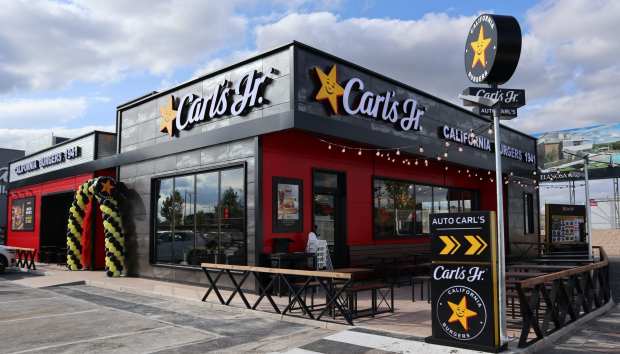CKE International President On Hitting 1,000 International Locations During The Pandemic

Even the most occasional restaurant customer has a sense of how difficult the pandemic has been for restaurants — one need only walk down Main Street to see the empty storefronts. As restaurants in the United States have struggled to stay afloat in this trying time, restaurant chains that operate across national borders have had to deal with all the same challenges and then some. In addition to having to navigate changing state laws, practices and regulations, these businesses have also had to navigate the vast nation-to-nation variances, as some countries succeeded in containing the coronavirus right off the bat, and others did not fare quite so well.
Now, international restaurant chains are recovering. As the vaccine rollout progresses around the world, multinational quick-service restaurant (QSR) company CKE Restaurants, Inc., parent company of Carl’s Jr. and Hardee’s, is resuming its aggressive global growth. Earlier this month, the company announced its 1,000th international restaurant, springing back from the difficult period.
“I would call [the pandemic] kind of a speed bump,” Mike Woida, president international at CKE Restaurants, Inc., told PYMNTS in an interview. “International markets had a somewhat of a different experience than we did domestically with the pandemic, and of course every country reacted a little bit differently … It pushed a lot of projects into this year, and what we are now seeing, as the pandemic wanes, is an acceleration of development.”
Far from resting at this major milestone, the company is looking to grow its global footprint two-fold within the next five years.
The Pandemic Pivot
Woida noted that, during the pandemic, CKE’s restaurants performed the best in Australia and New Zealand, and, as one might expect, in drive-thru-heavy markets.
“The U.S. has done really well because about 99 percent of our restaurants in the United States are drive-thru,” said Woida. “Places like Canada, Mexico, France, Australia, New Zealand where the majority of our restaurants are dry-thru — we’ve seen record sales in those places.”
On the other hand, markets where CKE’s restaurants are mainly in shopping malls, “predominantly in some Middle East countries and Southeast Asian countries,” did not fare as well, with those markets “still recovering,” both for CKE and for other major restaurant chains.
To get through the difficult period, Woida said, the company “pivoted to an omnichannel approach” in which the company “leaned into drive-thru, delivery, curbside, order-ahead, mobile app,” channels which, he said, “have really helped sales.”
In fact, PYMNTS’ Digitizing Restaurant Payments report created in collaboration with American Express notes that 89 percent of the of the $486 billion in food eaten at home in 2020 came from web and mobile orders and that 92 percent of top-performing restaurants offer mobile order-ahead apps.
Adapting For The International Customer
Included in the company’s international expansion is the addition of new locations in Europe, for which CKE’s “really strong economic model” helps offset the high real estate costs in many of the countries. Still, the company is continuing to seek new ways to “exploit and maximize our supply chain” in these markets.
“We really want to target and focus our development on important areas where we can get to scale quickly,” said Woida. “We have a Pan-European supply chain, already in place, and so growing that, getting to scale, and managing our costs is the next big thing that we have to do, where in the U.S., those are already fixed.”
As the company enters into new markets, it will often slightly adapt its menu to fit local tastes. Woida explained that these “localizations” will “try to offer familiar flavors without departing as an American burger brand.” These menu items “exploit the flavors that our local customers are familiar with” — Woida cited a truffle burger in CKE’s France locations, jalapeno peppers in its Mexican locations and poutine in Canada.
Store Design For The Post-COVID Future
The company recently opened a flagship restaurant outside of Sydney, which, in its first six weeks, had the “best performing record in CKE history so far.” Now, looking ahead, the company is putting the finishing touches on a “prototypical project,” aiming to debut it the store model Australia in Q3 2021, which it calls the “omni-prototype.”
“It’s a smaller footprint building, it’s very flexible in design,” said Woida.
The model can have a dining room with seating or can be drive-thru only. Its drive-thru is digitally integrated, it can have “curbside delivery ports,” it can be two floors or one, and it will set aside an area for third-party delivery drivers to pick up orders without impeding in-store customers.
Additionally, Woida predicts that across locations, off-premises ordering channels that have become more widespread during the pandemic will “continue to be strong,” while self-ordering kiosks will also grow in popularity as the chain opens new restaurants around the world.
“We have so much greenfield and whitespace opportunity internationally that we can grow so much faster,” said Woida. “We’re looking forward to leaning into our existing markets, and … exploiting and growing in the European market, which is really an exciting frontier for us.”
